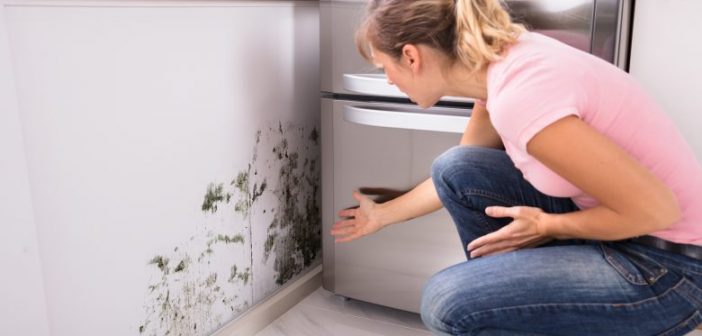How do you know if your house has a mold problem? Molds can be warning signs that something is wrong with your house – most probably water damage. Therefore, identifying the signs of mold is must to prevent further damage to your house’s structure and furniture. Yes, certain types of mold also eat away the wood. Therefore, before it goes that far, we have shared with you a few essential signs of mold growth that will help you call a mold removal company in time.
Signs of Mold Damage at Home
Allergies
If all of a sudden you are developing allergies, such as red and itchy eyes, skin rashes, watery eyes, sneezing and cough, nasal congestion and runny nose, then there’s a good chance that your house has been attacked by mold. Look at the places you frequently visit in your house. For instance, if you are a homemaker, you must start looking inside the kitchen’s crawl spaces, cabinets, sink and so on.
Also, if your allergic reactions are worse when you are at home, then that’s a bigger sign that you have molds in your home.
The same theory applies to the workplace, school, and college as well.
Some of the symptoms of mold allergies in human beings are cough, sore throat, itchy throat, congestion, skin rashes, red eyes, headaches, runny nose, shortness of breath, wheezing, itchy ears, and symptoms of hay fever.
Foul, Damp Smell
One of the common clues of mold contamination, which you cannot ignore, is a musty smell that the fungus expels. Even if you don’t see the mold, don’t ignore the smell.
You should thoroughly look through the house before it worsens. And if you aren’t able to identify the location, you must call a water or mold damage remediation expert for consultation.
Viewable Signs of Mold Growth
Mold and mildew signs are quite apparent to the naked eyes unless they are hidden in crawl spaces. You may not notice a small amount of mold growth or mistake them for dirt, soot, or discoloration. However, if you address the visible signs of mold when it is small, you can save your time, money, and effort effectively.
Molds usually occur in black, white, yellow, and purple in color. They can also be grey, green and brown.
Mold growing behind wallpapers and under the sink can be pink, purple, and orange color.
Molds usually look like clusters of black spots, slimy, withering, and smelly. Some may even appear thread-like and white in color.
Water Damage
Mold starts to develop in high moisture and humid environment. So, if your home is exposed to long-term moisture problems, it can lead to mold growth. In fact, mold can start growing within 48 hours in such an atmosphere.
Common symptoms of water damage include water stains on wall, dampness, discoloration, flaking and peeling paints and wallpaper, and water bubbles. Bulging and warped wooden surfaces and walls are also signs of water damage.
Leakage
Leaking water from a pipe burst or faulty machinery can also propagate mold growth. The above signs are prominent effects of water leakage. Heavy rains, flood, stagnant water, internal pipe burst, damaged valve, sump pump problem, faulty water heater, purifier, and washing machine can cause water damage, leading to mold growth and contamination.
If the water damage or leak is behind the walls, then the mold growth may probably be hidden behind the walls too.
Also, condensation is another sign that the level of moisture inside the house is higher than required. This could propel mold development. Using a dehumidifier and ventilating the area as much as possible will significantly reduce moisture content in the air.
You must also check underneath the carpet and behind the insulation for molds. Call for only a licensed mold removal company for the remediation and restoration process.




